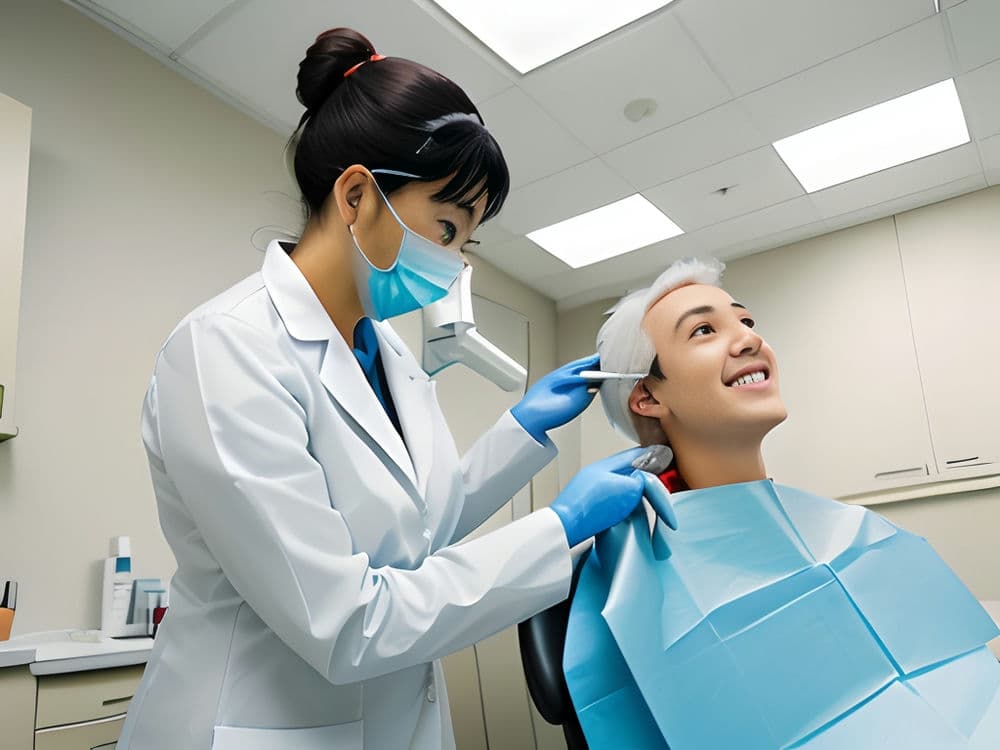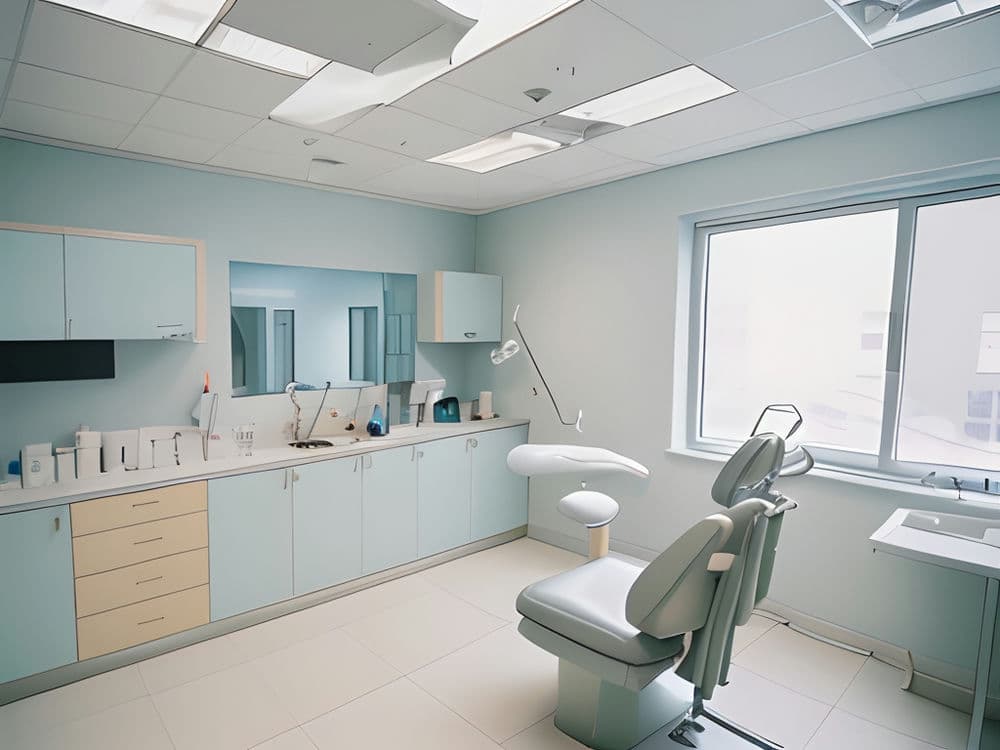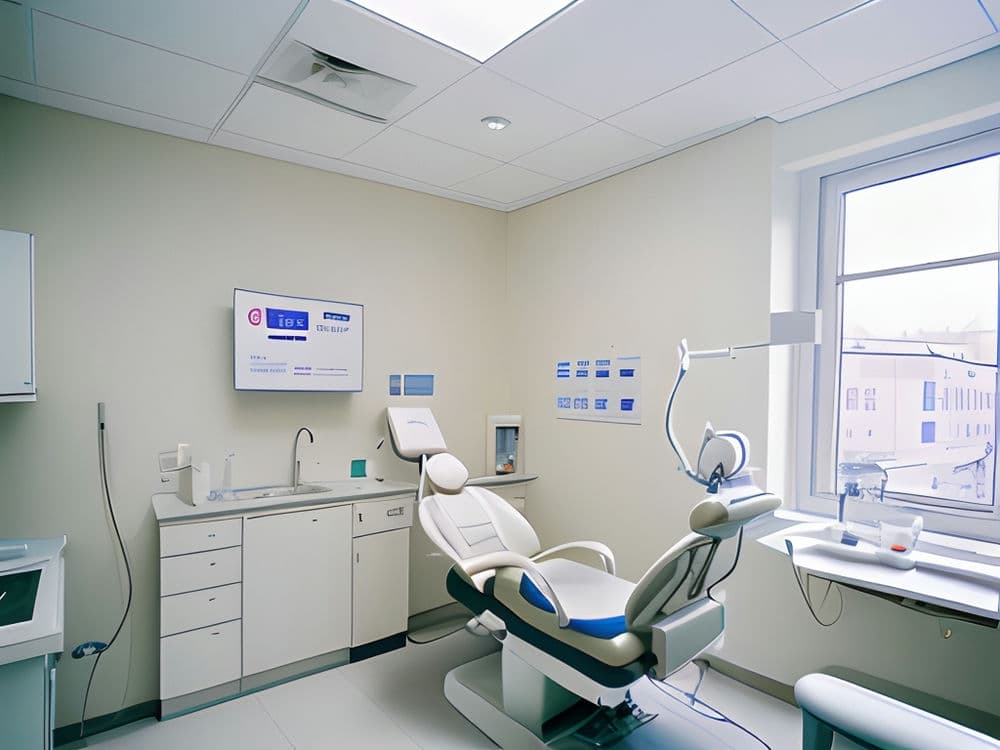Creating a culture of care that extends beyond the dental chair involves recognizing the intricate connections between oral health and overall wellness. It's about empowering patients with knowledge and resources to maintain their health in a holistic way.
To achieve this, dental professionals can take on the role of educators, ensuring that every patient understands how the health of their mouth is a reflection of their body's wellbeing. For instance, gum disease has been linked to heart disease, diabetes, and other chronic conditions; thus, maintaining good oral hygiene can have far-reaching benefits.
Providing educational materials in waiting areas or during appointments can help patients learn about these connections. Dentists might also collaborate with other healthcare providers to offer comprehensive care that addresses all aspects of an individual's health.
Moreover, preventive care should be emphasized as much as treatment. Regular check-ups allow for early detection of potential issues before they escalate into more severe problems. Encouraging good habits like brushing, flossing, and healthy eating contributes significantly to both oral and general health.
By fostering an environment where dental teams are seen as partners in a patient’s overall healthcare journey rather than just tooth specialists, we create a culture where care transcends the dental chair – benefiting individuals and communities alike.
Creating a culture of care that extends beyond the dental chair involves not just treating oral health issues as they arise but rather fostering an environment where patients are motivated to take charge of their own well-being. Proactive health management is crucial, as it encourages individuals to engage in behaviors and make lifestyle choices that contribute to long-term health benefits.
To instigate this shift towards proactive health management among patients, dental professionals can implement several strategies. First, education plays a pivotal role. By informing patients about the connection between oral health and overall wellness, we illuminate the broader implications of neglecting dental hygiene. For example, explaining how gum disease can increase the risk for systemic conditions like heart disease or diabetes bridges the gap between oral care and general health.
Secondly, creating tailored preventive care plans for each patient is essential. This step goes beyond generic advice; it involves assessing individual risk factors and offering personalized recommendations. Such plans might include regular check-ups, cleanings, dietary suggestions, or specific products aimed at addressing unique concerns.
Moreover, leveraging technology can significantly enhance efforts to promote proactive health behaviors. Dental practices can utilize apps or electronic reminders to nudge patients about upcoming appointments or when it's time to replace their toothbrushes. These little prompts help keep oral health top-of-mind.
Furthermore, establishing a supportive community around the dental practice can also inspire patients to maintain good habits. Whether through social media groups or in-practice workshops on topics like nutrition and smoking cessation, connecting with others who are on the same journey can provide motivation and accountability.
Lastly, recognizing patient efforts towards better self-care is vital for sustaining engagement. Celebrating milestones—even small ones like consistent flossing—can reinforce positive behavior changes and strengthen the patient-practitioner relationship.
By implementing these approaches within a practice, dental professionals do more than just look after teeth—they become advocates for comprehensive wellbeing. Encouraging proactive health management empowers patients to take an active role in their healthcare journey long after they leave the dental chair.
Creating a culture of care that extends beyond the clinical confines of a dental chair is not only noble but also essential in fostering holistic community well-being. This essay aims to explore how community involvement and outreach programs can be instrumental in achieving this goal.
Dentists are traditionally viewed as healthcare practitioners who focus on oral health within the four walls of their clinics. However, the scope for making an impact is far broader when they step outside these boundaries. By initiating and participating in community involvement and outreach programs, dental professionals have the opportunity to address larger public health concerns, educate the masses about oral hygiene, and provide aid to those who might not otherwise have access to dental care.
Community involvement often begins with awareness. Dental practices can organize free workshops at schools, community centers, or local events. These platforms allow dentists to impart knowledge about proper brushing techniques, flossing habits, and diet choices that influence oral health. As children learn these valuable lessons early on, they carry them throughout their lives, potentially reducing future dental issues.
Outreach programs take various forms—from mobile clinics offering services in underserved areas to international missions providing care in developing countries. For some patients, these initiatives may be their first encounter with professional dental care. The immediate relief from pain or discomfort that these services provide is undeniable; however, it’s the long-term impact—such as improved self-esteem from a restored smile—that truly exemplifies the depth of care extended beyond the chair.
Moreover, partnerships with local organizations can amplify efforts. Collaborations with food banks or homeless shelters enable dental practices to reach populations that are frequently overlooked when considering oral health services. By integrating dental check-ups into broader social support systems, we ensure that caring for one's teeth becomes part of a comprehensive approach to individual wellness.
Volunteering time and skills builds trust within communities while showcasing genuine concern for public health beyond profit margins or business growth. Such altruism encourages a reciprocal relationship where communities begin valuing oral health more seriously—a win-win situation for both parties involved.
In conclusion, expanding our vision of dental care to include active community engagement fosters an environment where individuals feel supported not just during their appointment times but consistently throughout their lives. It's through such meaningful interaction between dentists and their communities that we cultivate a culture brimming with empathy—a culture where every smile tells a story of shared commitment towards optimal health for all.
Creating a culture of care that extends beyond the confines of the dental chair involves cultivating community engagement initiatives to heighten oral health awareness. This essay explores various strategies for fostering such a culture.
Firstly, educational outreach programs in schools can play an integral role. Dentists and hygienists might volunteer their time to teach children about proper brushing techniques and the importance of regular dental check-ups. Incorporating interactive elements like games or quizzes could make learning more enjoyable, thus improving message retention among young audiences.
Another avenue is partnering with local businesses and organizations to sponsor free or low-cost dental screening events. These events not only provide immediate services but also serve as platforms for disseminating information on good oral hygiene practices. By making these services accessible, people who might otherwise neglect their dental health due to financial constraints can receive essential care.
Social media campaigns are also potent tools for spreading awareness. Dentists can create engaging content like videos or infographics that highlight key oral health concerns and share tips for maintaining a healthy mouth. By leveraging hashtags and collaborating with influencers, they can reach a broader audience and encourage community-wide conversations about oral health.
Mobile dental clinics represent another innovative approach. These clinics bring dental services directly to underprivileged areas, removing barriers to access such as transportation difficulties or work schedule conflicts. The presence of mobile clinics at community centers or local events makes it easier for individuals to incorporate dental care into their lives without disrupting their daily routines.
Furthermore, establishing support groups or forums where people can discuss oral health issues provides emotional support and fosters peer-to-peer education. Sharing personal experiences often resonates more deeply than clinical advice alone, creating a supportive network that encourages individuals to take proactive steps towards better oral health.
Finally, advocating for policy change is crucial in promoting long-term improvements in public oral health standards. Dental professionals can collaborate with public health officials to develop policies that prioritize preventive care and ensure adequate funding for community-based oral health initiatives.
In conclusion, extending the ethos of care from the dentist's office into the community requires a multifaceted approach that addresses both individual needs and broader societal factors influencing oral health outcomes. Through school programs, partnerships with local entities, social media outreach, mobile clinics, supportive networks, and policy advocacy, we can create an environment where good oral hygiene is not just an aspiration but an achievable reality for all members of society.
Creating a culture of care that extends beyond the confines of dental offices involves innovative outreach programs designed to meet people where they are, addressing not just their immediate dental needs but also contributing to their overall well-being. These initiatives often partner with community organizations, schools, and public health departments to provide comprehensive services that can make a significant impact.
One notable example is the "Give Kids A Smile" program initiated by the American Dental Association (ADA). This program mobilizes dental professionals nationwide to provide free oral healthcare services to children from underserved communities. It goes beyond traditional care by educating families about the importance of oral hygiene and preventive practices, ensuring ongoing benefits.
Mobile dental clinics represent another successful outreach model. These clinics travel to remote or underserved areas bringing essential dental services directly to those who might otherwise have limited access due to transportation barriers or financial constraints. The mobile units are often equipped with state-of-the-art technology and staffed by dedicated professionals ready to offer treatments ranging from cleanings and fillings to more complex procedures.
Furthermore, university-based programs have been instrumental in expanding care outside the dental office. For instance, some dental schools require students to participate in community service as part of their curriculum. Students gain hands-on experience while providing valuable services under supervision. Such programs not only hone future dentists' skills but also instill a sense of social responsibility toward marginalized populations.
Another approach is integrating oral health education into school curriculums for young children. By engaging kids in fun and interactive ways—such as through games, storytelling, or puppet shows—educators can foster positive attitudes towards oral hygiene early on.
Lastly, corporate-sponsored wellness programs that include dental check-ups as part of routine employee health screenings demonstrate how partnerships between private entities and healthcare providers can facilitate access to care without stepping into a traditional clinic setting.
In conclusion, these outreach efforts showcase how thinking creatively and fostering collaborations across various sectors can lead us toward a society where everyone has the opportunity for optimal oral health—a goal that truly starts well before any patient sits down in the dentist's chair.
Creating a supportive work environment within the realm of dentistry extends far beyond the mere interactions with patients in the dental chair. It encompasses cultivating an atmosphere where every team member feels valued, heard, and empowered to deliver their best care. This commitment to a culture of care is pivotal not only for staff morale but also for patient satisfaction and the overall success of the practice.
Firstly, consider communication as the foundational element of a nurturing workplace. Open dialogues encourage sharing ideas, concerns, and feedback without fear of judgment or reprisal. When discussions are transparent and frequent, trust blossoms among colleagues, leading to stronger teamwork and collaboration.
Secondly, professional development opportunities signal an investment in employees' growth. By offering continuing education, mentorship programs, or pathways to advancement within the practice, staff members sense that their careers are genuinely supported. This empowers them to take initiative and remain engaged with their roles.
Thirdly, recognition plays a crucial role in affirming hard work and dedication. Celebrating achievements - big or small - boosts confidence and motivates individuals to continue striving for excellence. It's important that acknowledgment comes not just from leadership but also from peers; peer-to-peer recognition can significantly enhance camaraderie.
Fourthly, ensuring a healthy work-life balance is essential for preventing burnout amongst dental professionals. Flexibility with schedules or providing support during personal hardships demonstrates that management values employees' wellbeing outside of work hours as much as they do their professional contributions.
Moreover, fostering diversity and inclusivity within the workplace enriches experiences by bringing varied perspectives into daily operations. A diverse team is more equipped to understand and meet the needs of a diverse patient base effectively.
Lastly, creating a safe physical environment cannot be overstated — it's vital for both staff safety and comfort. Ergonomically designed spaces reduce physical strain while adherence to strict infection control protocols ensures everyone's health is protected.
In conclusion, crafting a supportive work environment in dentistry means building on these principles consistently over time—communication, development opportunities, recognition strategies, work-life balance attention, diversity enhancement efforts ,and establishing safety standards all contribute significantly to creating an enduring culture of care that benefits both employees and patients alike.
Creating a culture of care within a dental practice extends far beyond the expert execution of clinical procedures. It necessitates an environment where teamwork and support are not just encouraged but deeply ingrained in the very fabric of the clinic's operations. The harmonious interplay between dentists, hygienists, assistants, and administrative staff forms the backbone of this dynamic.
At first glance, fostering such a collaborative ambiance might seem peripheral to patient care. However, it is quintessential for providing exceptional experiences that resonate with patients long after they've left the dental chair. When each team member feels valued and supported, their capacity to contribute meaningfully to patient well-being and comfort expands exponentially.
A positive work culture begins with communication – clear, open channels that allow for constructive feedback and shared decision-making. Regular meetings can serve as more than mere logistical briefings; they become forums for collective brainstorming and nurturing camaraderie. Moreover, recognizing individual contributions fortifies morale while simultaneously promoting a sense of ownership over the group's achievements.
Professional development opportunities also play a pivotal role in uniting dental staff members. By investing in continual education and training together, they not only refine their skills but also foster mutual respect for each other's dedication to growth. This commitment translates into improved patient care as team members bring fresh perspectives and innovative techniques back to the practice.
Lastly, celebrating successes both large and small reinforces solidarity among staff members. Whether it’s acknowledging an efficient workflow on a busy day or commemorating years of service by an employee, these celebrations remind everyone that their efforts have not gone unnoticed.
In essence, cultivating a culture where teamwork thrives is about creating an ecosystem in which every member supports one another unconditionally. This synergy allows dental practices to deliver care that extends well beyond technical proficiency—it builds lasting relationships rooted in trust and compassion with both colleagues and patients alike.
Creating a culture of care extends far beyond the immediate dental procedures performed within the confines of a dental clinic. It encompasses nurturing an environment where staff members are not merely cogs in a healthcare machine, but rather valued individuals encouraged to expand their knowledge and skill sets continuously.
Promoting continuous learning and development opportunities for staff is pivotal to fostering this culture. Such an approach ensures that every team member feels invested in and supported, thereby enhancing their ability to provide exceptional patient care. When staff are given the resources and time to pursue further education, attend workshops, or engage in professional development activities, the benefits are manifold.
Firstly, it leads to improved job satisfaction as employees feel more competent and confident in their roles. This increased morale can significantly impact the atmosphere of a practice, with happier staff typically providing warmer patient interactions. Secondly, staying abreast of current industry practices and technologies enables dental professionals to offer cutting-edge services which can elevate the overall standard of care provided.
Moreover, by championing growth and learning within the workplace, dental practices cultivate leaders who can contribute innovative ideas for better patient experiences. These leaders become instrumental in shaping a supportive work environment that other team members aspire to emulate.
In conclusion, creating a culture of care means considering how we support our colleagues' aspirations and professional journeys just as much as we focus on patients' smiles. By valifying continuous learning initiatives, dental practices not only enhance their quality of service but also build resilient teams ready to navigate an ever-evolving healthcare landscape with expertise and empathy.
Creating a workplace environment where care extends beyond clinical interactions is crucial in dental practices. The implementation of office policies that palpably reflect core care values is the cornerstone for fostering this culture. But how exactly does one weave the threads of compassion and empathy into the fabric of office protocols and daily routines?
Firstly, it's imperative to recognize that each team member plays an instrumental role in nurturing a caring atmosphere. From receptionists to dental hygienists, every staff interaction should radiate respect and understanding. This requires comprehensive training that emphasizes active listening skills, emotional intelligence, and the importance of creating positive patient experiences.
One practical approach is to enact policies that prioritize patient comfort and convenience. For instance, flexible scheduling options can alleviate stress for patients trying to fit appointments into their busy lives. By doing so, we communicate that we value our patients’ time as much as their oral health.
Moreover, privacy must be safeguarded with utmost diligence; hence, confidentiality policies must be stringent and transparent. Patients entrust us with sensitive information —a trust that forms the bedrock of any healthcare relationship— thus ensuring their data’s security reinforces our commitment to their well-being.
Furthermore, continuous education about various cultures and backgrounds can enhance sensitivity towards diverse patient populations. When staff members are knowledgeable about different cultural norms regarding health care practices or understand basic phrases in multiple languages, it bridges gaps in communication and creates a more inclusive environment.
Lastly, feedback mechanisms allow for ongoing improvement by inviting both employee and patient perspectives on how well the practice embodies its care values. This may include regular surveys or suggestion boxes which demonstrate that all voices are valued and considered in shaping policy.
In essence, implementing office policies infused with care values is more than just protocol—it's about crafting moments of genuine human connection at every point of contact within the practice. By doing so consistently, dental offices can ensure they’re not only improving smiles aesthetically but also contributing positively to their patients' overall sense of being cared for—a sentiment that resonates far beyond the dental chair.
Creating a nurturing environment within dental practices extends well beyond the clinical expertise and technical procedures performed in the chair. It involves a comprehensive approach that encompasses every aspect of patient interaction, fostering an atmosphere where individuals feel valued, respected, and comfortable. To truly cultivate a culture of care, developing policies that prioritize patient comfort, privacy, and satisfaction is not merely beneficial – it's imperative.
Patient comfort must be considered from the very moment they step into the clinic. The ambiance of the waiting area should offer a calming effect; soft lighting, soothing colors, and comfortable seating can significantly reduce anxiety. But physical comfort alone isn't enough. Dentists and their teams need to communicate effectively with patients using language that is empathetic and void of medical jargon that could confuse or intimidate.
Privacy is another cornerstone policy in creating a culture of care. Confidentiality regarding patient information fosters trust between dentist and patient. Practices should ensure that discussions about treatment plans or personal details are conducted discreetly, away from public areas where conversations might inadvertently be overheard.
Satisfaction ties together all aspects of the dental experience. It’s reflected in the quality of care provided and in how patients perceive their relationship with their dental team. Gathering feedback through surveys or informal chats can give valuable insights into what changes could make significant differences to patient experiences.
In conclusion, by embedding these principles into daily operations — ensuring comfort is always addressed; respecting privacy at all times; striving for complete satisfaction — dental practices can create an enduring culture of care that resonates far beyond the confines of any procedure or visit.
Creating a culture of care beyond the dental chair involves not just treating dental conditions but also crafting an environment where every patient feels welcome and accommodated. Ensuring accessibility for all, including those with special needs, is paramount. This commitment to inclusivity demands thoughtful consideration of physical spaces, communication methods, and treatment approaches.
For starters, the physical layout of a dental office must be navigable for individuals with mobility challenges. Wide corridors, ramps instead of stairs, and adjustable dental chairs are essential modifications that can make a significant difference. However, accessibility extends beyond architecture; it encompasses sensory-friendly environments for patients with autism or other sensory processing disorders. For example, reducing harsh lighting and loud noises can help mitigate anxiety and discomfort.
Furthermore, accessible care requires effective communication tailored to each patient's needs. Dental professionals should employ clear signage with large fonts and Braille for the visually impaired. Offering interpretation services for deaf or hard-of-hearing individuals or those who speak different languages ensures that vital information isn't lost in translation.
Specialized training for dental staff is another cornerstone in creating a culture of care that embraces everyone. Staff should be educated about various disabilities and equipped with strategies to provide supportive and empathetic care tailored to individual needs.
In conclusion, by ensuring accessibility in these ways—through considerate design choices, open communication channels, and specialized staff training—we forge a path toward universal inclusion in dental healthcare settings. A truly caring culture goes beyond technical proficiency; it embodies empathy and strives to create an environment where no patient is left behind because of their unique needs.
In the realm of dental care, the fusion of technology and human compassion has unlocked unprecedented possibilities for patient-centered experiences. Leveraging technology doesn't merely streamline clinical procedures; it also nurtures a culture that extends the warmth of the dental chair into every interaction, building trust and comfort beyond mere treatment.
Imagine walking into a dental office where ambient lighting adjusts to soothe your nerves, calming music plays at just the right volume, and virtual reality offers a peaceful escape while you wait. These technological touches signal a commitment to patient well-being that starts before the first hello.
When it comes to actual dental work, innovations like 3D imaging and painless laser treatments not only enhance precision but significantly reduce discomfort. This high-tech approach demonstrates a dedication to minimizing anxiety and maximizing satisfaction.
Moreover, post-visit communication is revolutionized with personalized follow-up messages through secure portals or apps, offering advice and reassurance directly from your dentist. This continuous connection reflects a holistic vision where care isn't confined within walls—it's an ongoing relationship fostered by technology.
Creating such an environment requires staff who are not just skilled in their craft but also in deploying these tools effectively. Training programs focused on empathetic use of tech can empower practitioners to deliver exceptional care that feels both cutting-edge and deeply personal.
Ultimately, leveraging technology is about crafting moments that resonate with patients long after they leave the clinic. It's about infusing every aspect of dental service with thoughtful innovation—ensuring that even when people aren't sitting in the chair, they still feel cradled by care that’s as attentive as it is advanced.
Creating a culture of care that extends beyond the dental chair is essential in modern dentistry. Patient education, communication, and follow-up are pivotal aspects where digital tools can play a transformative role. However, it's important to note that simply integrating technology isn't enough; the human element must always be at the forefront of patient interactions.
In educating patients, interactive software can visualize dental conditions and treatment plans more effectively than static images or verbal explanations alone. But it's the empathetic delivery of this information by dental professionals that reassures patients and fosters trust.
Communication with patients has been revolutionized by digital platforms. Automated appointment reminders via text or email ensure fewer missed visits, but personal phone calls from staff to confirm appointments or check on recovery add warmth to efficiency.
Follow-up care is another area ripe for digital enhancement. Mobile apps allow patients to track their progress post-procedure and report any concerns seamlessly. Still, nothing replaces the caring voice of a dental professional personally reviewing those reports and offering tailored advice.
Ultimately, while leveraging digital tools is integral in cultivating an advanced culture of care in dentistry, these technologies should augment rather than replace the compassionate connections that define exceptional patient experiences.
In our journey towards fostering a compassionate and patient-centric culture within dental practices, the implementation of technological solutions for collecting patient feedback is paramount. This strategy transcends merely providing excellent chairside manners; it aims to create an environment where continuous improvement and personalized care flourish.
Integrating technology into patient feedback mechanisms allows for real-time insights into the experiences and satisfaction levels of those we serve. Digital surveys, accessible via tablets or smartphones immediately post-appointment, empower patients to share their thoughts while memories are fresh. These platforms can capture nuances in sentiment that might otherwise be lost if feedback were solicited days later.
Moreover, this approach facilitates anonymity, which can lead to more honest and constructive criticism. A simple interface encourages participation from individuals across all demographics, ensuring a broad spectrum of perspectives is considered when evaluating service quality.
The data collected through these technologically advanced systems offers invaluable analytics. Patterns can emerge revealing common pain points or areas ripe for praise—information that drives targeted improvements in both clinical procedures and customer service protocols. When dentists and staff have access to such detailed feedback, they can make informed decisions that resonate well with their patient base.
By analyzing trends over time, dental practices can adapt to evolving expectations and proactively address emerging issues before they become widespread problems. Furthermore, sharing positive testimonials captured through these technologies can boost a clinic's reputation and attract new clients who value transparency and evidence of quality care.
Patient feedback mechanisms supported by technology also demonstrate a commitment to open communication channels between providers and patients outside the confines of scheduled appointments. It signals an understanding that the relationship with patients extends beyond the walls of the office—a modern approach aligned with values centered on holistic well-being rather than just oral health outcomes.
In conclusion, incorporating patient feedback mechanisms through technology is not simply about gathering data—it’s an integral component in shaping a culture that embraces caring as much about the human experience as it does about dental expertise. As we navigate this interconnected world where healthcare meets digital innovation, let us remember that at its core lies the fundamental goal: delivering care that listens just as intently as it heals.
Creating a culture of care within dental practices extends far beyond the confines of the dental chair. It's about fostering an environment where every interaction is infused with empathy, understanding, and a genuine concern for patients' overall well-being. When dentists and their teams prioritize compassionate care, they establish trust and rapport with patients, which are critical components for successful health outcomes.
In such a nurturing atmosphere, patients feel valued and heard. This emotional connection can lead to increased patient engagement in their oral health care. They are more likely to follow through with treatment plans and maintain regular check-ups when they believe their provider truly cares about them as individuals. This adherence to preventive measures and treatments can prevent minor issues from escalating into major health complications.
Moreover, a culture of care encourages open communication between the dental team and patients. It allows for tailored treatment plans that accommodate individual needs and concerns. Patients who are anxious or fearful might be more willing to express these feelings in an environment where they feel supported, leading to customized approaches that help them overcome barriers to receiving care.
A caring culture also supports the mental well-being of both patients and providers. Dental professionals working in such environments are likely to experience greater job satisfaction, reduced burnout rates, and enhanced teamwork – all of which contribute positively to patient care quality.
Ultimately, by creating a culture of care that transcends the dental chair, providers pave the way for better health outcomes through strengthened patient-provider relationships, personalized treatment experiences, improved adherence to healthcare regimens, and proactive management of oral health that contributes significantly to overall health status.
In summary, cultivating a caring ethos within dentistry not only enriches the patient experience but also serves as a cornerstone for achieving optimal health results – illustrating that kindness interwoven with clinical expertise is indeed powerful medicine for both body and soul.
Creating a Culture of Care Beyond the Dental Chair: A Call-to-Action for Holistic Commitment
In the realm of dental health, professionals often focus on addressing immediate oral concerns – cavities, gum disease, and routine cleanings. However, there is a growing need to extend our vision beyond these essential services. We must recognize that our responsibility does not end at the dental chair; rather, it's where it begins. It is imperative for us to embrace a holistic approach that considers the physical, mental, and social well-being of our patients.
To foster a culture of care that permeates all aspects of our practice requires commitment from every dental professional. This call-to-action isn't about simply adding procedures or services; it's about embedding compassionate care into the very fabric of our profession.
Firstly, we have an opportunity to educate ourselves continuously about the broader health implications linked to oral health. For instance, periodontal disease has been associated with cardiovascular conditions and diabetes. By expanding our knowledge in such areas, we can evolve from being mere practitioners to becoming educators and advocates for comprehensive patient wellness.
Secondly, this call-to-action demands active listening and empathetic communication with patients. Understanding their lifestyle habits, stress levels, and nutritional choices allows us to provide tailored advice that transcends traditional dental counsel. Our role should include guiding them towards healthier life choices which will ultimately reflect in their oral and overall health.
Thirdly, collaboration with healthcare professionals across various disciplines is crucial for a truly holistic approach to patient care. By establishing networks with dieticians, general physicians, or mental health experts we can ensure that all facets of patient well-being are considered in treatment plans.
Moreover, we must advocate for systemic changes within healthcare policies that support integrated care models while also making strides toward equitable access to dental services for underserved communities. As leaders in dentistry we have both an opportunity and obligation to drive change that prioritizes total patient welfare over isolated interventions.
This transformation towards holistic patient care initiatives is more than an option—it’s an ethical imperative. It's time for each one within the dental community—dentists hygienists assistants administrators—to recommit themselves wholeheartedly towards this noble pursuit.
Our shared mission should be clear: To deliver care that extends beyond mere symptom relief ensuring deeper lasting positive impacts on patients' lives. Let us band together courageously persevere through challenges as we strive towards creating nurturing environment where every individual feels valued understood holistically cared for—a true culture of care cultivated right from our own offices reaching far beyond confines traditional roles expectations.





